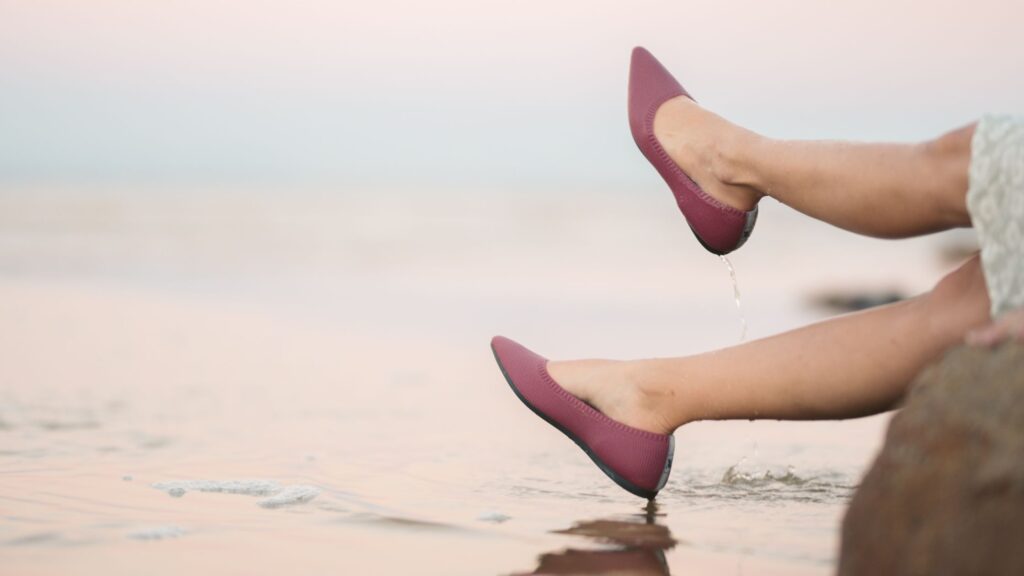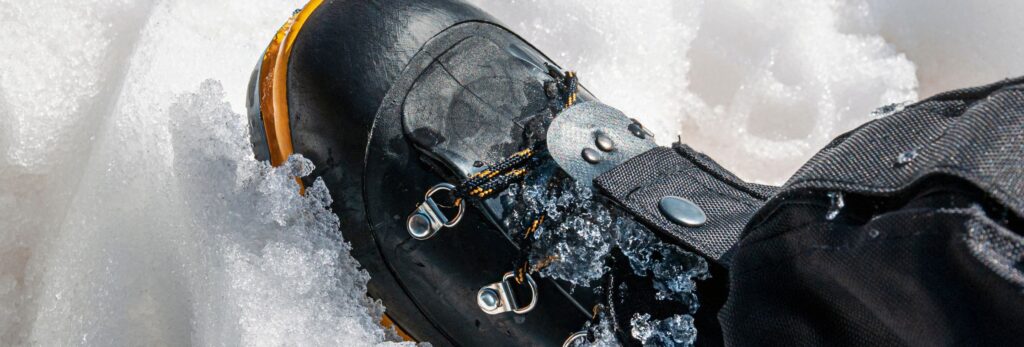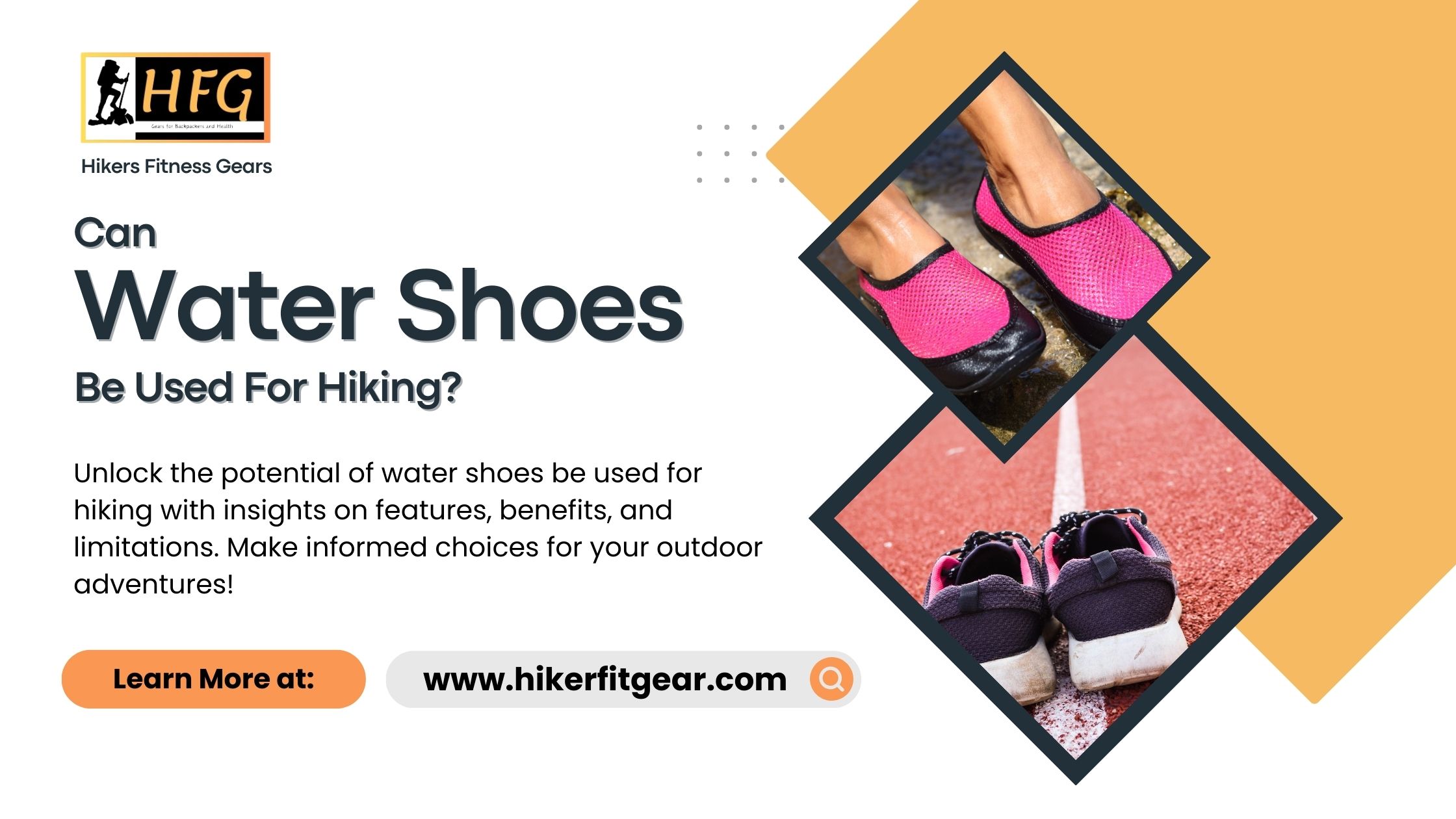Can Water Shoes Be Used For Hiking?
Introduction
In the world of outdoor exploration, the right footwear can make all the difference. Water shoes, designed primarily for water activities like swimming and kayaking, offer unique features that raise the question: Can water shoes be used for hiking? This comprehensive guide delves into the suitability of water shoes for hiking adventures, covering their features, benefits, drawbacks, and practical considerations.
Table of Contents
What This Post Covers
This in-depth discussion on using water shoes for hiking will explore:
- A detailed overview of water shoes and their typical uses.
- Key features of water shoes relevant to hiking scenarios.
- The benefits and limitations of using water shoes for hiking.
- Considerations for selecting appropriate footwear for hiking excursions.
- Tips and advice for maximizing comfort and safety while using water shoes for hiking.
What Are Water Shoes?
Water shoes, also known as aqua shoes or amphibious shoes, are a specialized type of footwear crafted for water-centric activities. Their design and construction prioritize quick-drying materials, breathability, and traction on wet surfaces. Water shoes are lightweight, flexible, and provide varying degrees of protection for your feet during aquatic adventures.

What Do Water Shoes Involve?
Key Features of Water Shoes
Water shoes are characterized by several key features that set them apart from traditional hiking footwear:
- Quick-Drying Materials: Typically made from materials like neoprene, mesh, or synthetic fabrics that don’t retain water, allowing for rapid drying.
- Breathability: Incorporates mesh panels, drainage holes, or perforations to enhance airflow and prevent moisture buildup inside the shoe.
- Grip and Traction: Equipped with non-slip soles featuring patterns or treads designed to provide secure footing on wet or slippery surfaces.
- Lightweight Design: Minimalist construction for agility, comfort, and ease of movement in water and on land.
Types of Water Shoes
Water shoes come in various styles to suit different activities and preferences:
- Closed-Toe Water Shoes: Offer more comprehensive protection with closed toe boxes and sturdy footbeds, making them suitable for rugged terrain and rocky trails.
- Open-Toe Water Shoes: Provide breathability and flexibility, ideal for less demanding water activities and casual hikes.
Can Water Shoes Be Used For Hiking?
Benefits of Using Water Shoes for Hiking
Water Shoes Be Used For Hiking can offer several advantages when used for hiking purposes:
- Versatility: Their ability to handle wet conditions makes them suitable for hikes involving stream crossings, muddy terrain, or wet environments.
- Quick-Drying Properties: Rapid drying reduces discomfort and the risk of blisters caused by prolonged exposure to moisture.
- Traction and Grip: Many water shoes feature grippy soles that provide adequate traction on various surfaces, including rocks, mud, and slippery trails.
- Lightweight and Agile: Ideal for hikers who prefer minimalist footwear and value agility and flexibility on the trail.
Drawbacks of Using Water Shoes for Hiking
While water shoes offer benefits, they also have limitations that may impact their suitability for certain hiking scenarios:
- Limited Support: Water shoes may lack the robust ankle support, cushioning, and stability features found in dedicated hiking boots or shoes, which can be essential for long hikes or rugged terrain.
- Durability Concerns: Constant exposure to abrasive surfaces, rocky trails, and rough terrain can accelerate wear and tear on water shoes, potentially reducing their lifespan.
- Protection Levels: While they provide some protection, water shoes may not shield your feet as effectively as hiking-specific footwear in challenging conditions, such as sharp rocks or uneven terrain.
Main Body of the Topic
When Can Water Shoes Be Used for Hiking?
Water Shoes Be Used For Hiking in specific scenarios and environments:
- Water-Centric Trails: Trails with frequent water crossings, rivers, or sections where you anticipate wet conditions are ideal for using water shoes.
- Short to Moderate Hikes: For relatively short or moderate-distance hikes on well-maintained trails without extensive rugged terrain or technical challenges.
- Beach and Coastal Hikes: Along coastal paths, sandy beaches, or shoreline trails where water shoes offer sand protection, water entry capabilities, and ease of movement in the water and on land.
Considerations Before Using Water Shoes for Hiking
Before opting to Water Shoes Be Used For Hiking, consider the following factors:
- Trail Difficulty and Terrain: Evaluate the trail’s difficulty level, terrain features, and potential hazards to determine if water shoes provide adequate support, traction, and protection.
- Distance and Duration: Assess the length and duration of your hike, as longer hikes or multi-day trips may require more supportive footwear to prevent fatigue and foot discomfort.
- Weather Conditions: Check the weather forecast, trail conditions, and seasonal variations to anticipate challenges such as rain, mud, or varying temperatures.
Tips for Using Water Shoes on Hikes
To optimize your experience when Water Shoes Be Used For Hiking, consider these tips:
- Choose the Right Type: Select closed-toe water shoes for enhanced protection and support, especially if your hike includes rocky or uneven terrain.
- Test Comfort: Wear your water shoes on shorter hikes or trial walks to assess comfort levels, fit, and performance before embarking on longer treks.
- Pack Backup Footwear: Carry a lightweight pair of hiking sandals, trail shoes, or boots as backup footwear in case you encounter terrain or conditions that require more robust protection or support than water shoes can provide.
Why Are Water Shoes Different from Regular Hiking Shoes?
Understanding the distinctions between water shoes and traditional hiking footwear is crucial for informed decision-making:
- Purpose and Design: Water shoes are purpose-built for water activities, emphasizing quick-drying properties, lightweight construction, and enhanced grip in wet environments. In contrast, hiking shoes or boots prioritize durability, support, traction on varied terrain, and protection against impact and hazards.
- Usage Scenarios: While water shoes excel in water-based activities, light hikes, and wet conditions, traditional hiking footwear is better suited for rugged trails, long-distance treks, technical terrain, and challenging outdoor environments.

Things to Look for When Using Water Shoes for Hiking
To make the most of Water Shoes Be Used For Hiking, pay attention to the following aspects:
- Support and Cushioning: Choose water shoes with adequate arch support, cushioned footbeds, and shock-absorbing properties to reduce strain and discomfort during hikes.
- Durability Features: Opt for models with reinforced toe caps, sturdy construction, and durable materials that can withstand abrasion, impact, and extended use on diverse terrain.
- Traction and Grip: Check the outsole design, lug patterns, and traction features to ensure reliable grip and stability on wet rocks, slippery surfaces, and muddy trails.
Conclusion
Water Shoes Be Used For Hiking, can serve as a viable option for specific hiking scenarios, particularly those involving water crossings, wet environments, and casual hikes on moderate terrain. Their quick-drying properties, lightweight design, and agility make them appealing to outdoor enthusiasts seeking versatility and comfort on the trail. However, it’s essential to weigh the benefits and drawbacks of using water shoes for hiking and consider factors like trail difficulty, distance, weather conditions, and personal comfort preferences before making your footwear choice.
Frequently Asked Questions:
1. Can Water Shoes Be Used For Hiking in Rocky Terrain?
Water shoes are generally designed for versatility in wet environments and may lack the robust support and protection needed for hiking on rugged or rocky terrain. It’s advisable to choose dedicated hiking footwear with sturdy construction and ankle support for such conditions.
2. Are Water Shoes Suitable for Hiking in Cold Weather?
Water shoes prioritize breathability and quick-drying properties, which may not provide adequate insulation or warmth in cold weather. For hiking in chilly conditions, opt for insulated hiking boots or shoes designed for cold climates.
3. Do Water Shoes Provide Enough Traction on Slippery Surfaces?
Many water shoes feature non-slip soles with grippy patterns or treads designed to provide traction on wet and slippery surfaces. While they offer reasonable grip, it’s essential to exercise caution and adapt your hiking pace and foot placement on challenging terrain.
4. How Do I Maintain Water Shoes After Hiking?
To prolong the life and performance of water shoes, follow these maintenance tips:
1. Rinse off dirt and debris after each use, especially if hiking in muddy or sandy conditions.
2. Allow shoes to air dry thoroughly, avoiding direct sunlight or heat sources that may damage materials.
3. Regularly clean and treat the shoes with specialized products to maintain waterproofing and durability.
4. Check and repair any wear or damage to soles, seams, or components to ensure continued functionality.

My name is Oje and I’m obsessed with finding the latest tech gear to help people track progress and solve problems more efficiently. I spend countless hours researching and testing innovative apps, wearables, and devices for fitness, health, productivity, and more.
